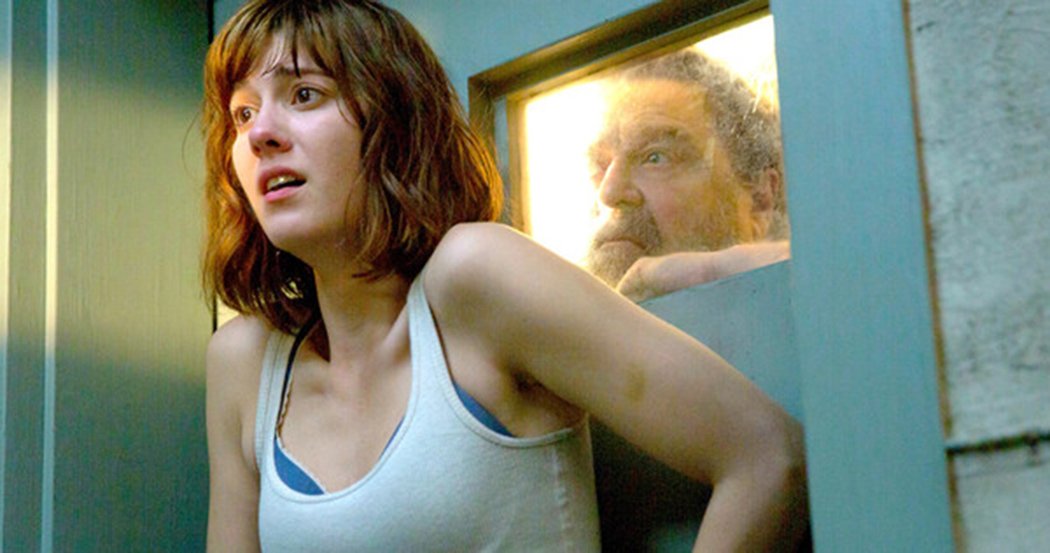Recommendation: 10 Cloverfield Lane (2016)
Stripped of the constant flow of information that pervades daily life, how could you confirm that the world around you has perished? Dan Trachtenberg’s brilliant film 10 Cloverfield Lane (2016) explores this phenomenon, assisted by the tropes of irrational conspiracy theories, captive and capturer, and conventional apocalyptic cinema.
The film opens with minimal exposition: a runaway fiancée who gets into a serious car accident while major blackouts ensue. She awakens to find herself chained down in a bunker. Commencing the story with as few details as possible and shutting down typical dramatic irony, the viewer shares the same confusion and mistrust of the main character, Michelle. The rest of the film rests on a thin balance of whether the story provided by Howard, Michelle’s menacing capturer, is based in reality, or if he is simply a masochistic abductor plotting to murder Michelle.
“Stripped of the constant flow of information that pervades daily life, how could you confirm that the world around you has perished?”
Howard’s character is presented as the typical conspiracy theorist; from his Navy background conjuring a sense of needed “preparedness” (which birthed a fully furnished bunker), to a lack of family and intimacy. Yet, dichotomy arises with his occasional softness towards Michelle and the other dweller, Emmett, who worked for Howard. And when Emmett corroborates this fleshed-out story of the outside world’s dangers, Howard is cast in the light of an ostensible, over-the-top doomsday prepper rooted in reality.
During Michelle’s first escape effort, she reaches the last door between the bunker and the outside world, where she comes face-to-face with a wounded woman pleading for entry. This information seemingly paints a clear picture in Howard’s favor, but following the reveal of Howard as the one who hit Michelle’s car and the sound of vehicles overhead, the tension continues to build. Howard is irritable and susceptible to flipping on Michelle or Emmett at any moment for potentially exposing the group to the “toxic air” outside, so Michelle and the audience question if he means it or just does not want the two to leave his grasp.
As time passes, a measure that is almost arbitrary in a secluded bunker, the two find increasingly eerie information about Howard’s past, particularly surrounding his potential role in the abduction and murder of a high school girl he claimed to be his daughter. Avoiding Howard’s omnipotent gaze over the bunker, Michelle channels her ability as a fashion designer to create an outfit that would allow her to venture outside. The conflict within the presumed “safe space” reaches a climax with a severe fallout. Michelle ends up finding out the truth about her world, something that defies the imagination of everyone involved.
10 Cloverfield Lane can be viewed as a commentary providing insight into the character of people under unforgiving circumstances, but more profoundly about information and humans’ reluctance to vest all of their faith in one source. Michelle derives power from her search for truth, something the film asks all of its viewers to do when considering matters in their daily life. In the modern world, an abundant stream of truth and lies is on display at all hours, but it is up to the impressionable reader to become the author of their validity. Even within a cataclysmic event, or especially in those times, questions must be asked by the people not in charge to fight for ultimate meaning and authenticity.


